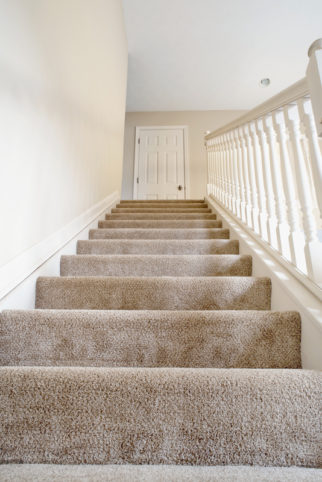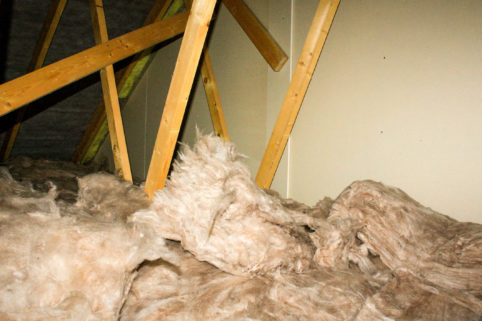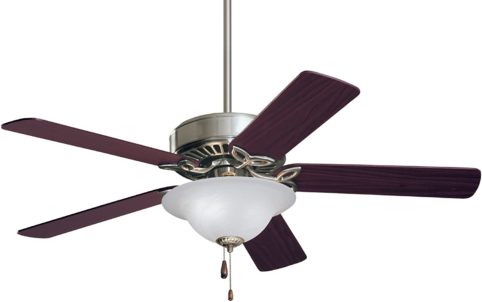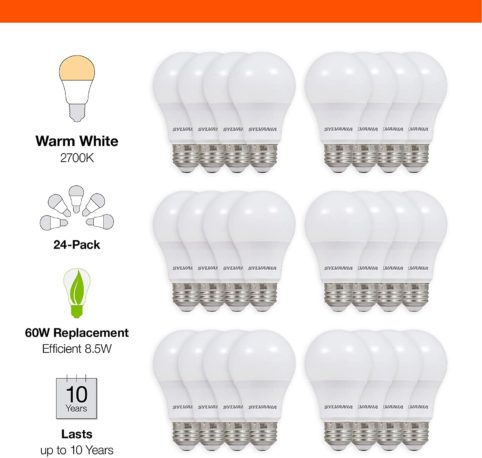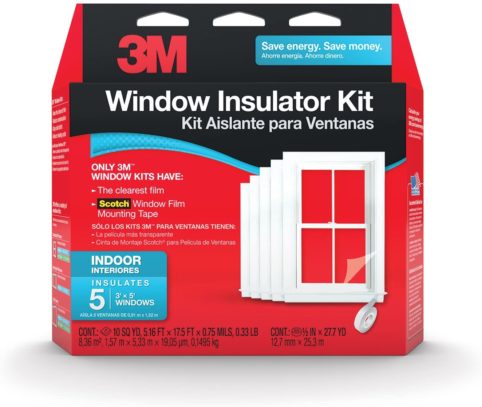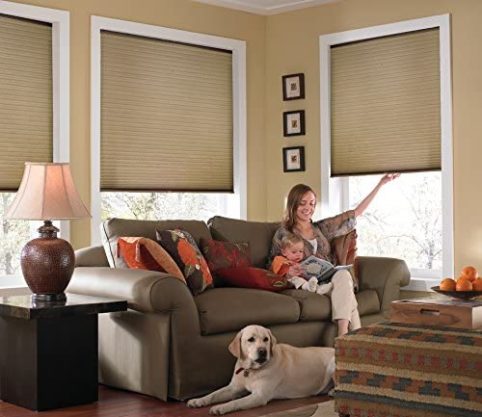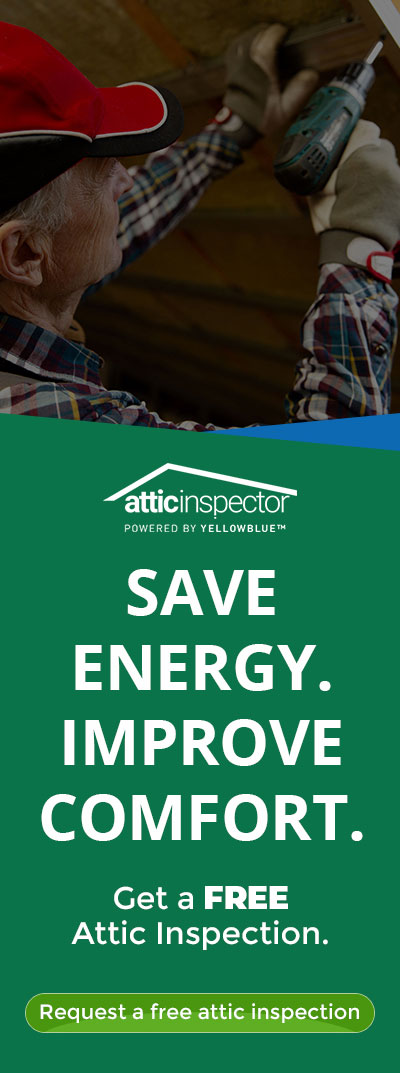You know what’s great? Stepping into a cold, conditioned room after being stuck in the heat.
You know what doesn’t feel great? Expecting that refreshing rush of cool air, and being slammed with a thick wall of stale, humid air. That’s just gross.
This is the struggle of homeowners across the country during the summer. The hot season can be a killer on home energy bills, but when those costs don’t even create a comfortable environment, it turns into wasted money and angry homeowners.
Thankfully, there are solutions that don’t involve ice packs taped to foreheads. We’ve broken down exactly why the upstairs gets so hot during the summer, and what can be done to alleviate the sweltering frustration.
[toc]
Why Upstairs is Hotter than Downstairs
Hot Air Rises
The most basic answer. Hot air rises, and your upstairs deals with the consequences.
Most multi-story homes are designed with this in mind. The ventilation system, and especially the heating and cooling systems, should already be built to counter this natural force. With that being said, the upstairs can still be uncomfortable if those systems aren’t functioning properly.
If there is an air conditioner on the first floor and nowhere else, the home is going to be working too hard to push conditioned air throughout the entire building. Sometimes upstairs floors are not designed for the best possible airflow. If the upstairs floors have few windows and a lot of hallway space between fenestrations, the whole floor’s airflow can suffer.
Heat Seeks Out Cold
The less common answer, but just as critical as the first one. Hot air doesn’t just rise — it actually seeks out colder environments.
It’s actually the second law of thermodynamics. Put simply, heat naturally tries to balance the temperature in any environment. This means that the warm air will always “chase” the colder air, constantly seeking that equilibrium. If a home is air conditioned during a hot summer, and you open a window, the hot air from outside is going to come rushing into the cooler environment.
When it comes to a hot upstairs environment, this property works the same way. Except it’s not just windows and outside air that you must worry about. The temperatures between different rooms will constantly try to balance out, as the heat from hotter rooms seeks out the cooler environments.
This is most notable in the case of attics. Since attics are often under-insulated, poorly sealed, and poorly ventilated, the temperature environment can be drastically different in an attic than in the rest of the home. During the summer, this leads to the hot air from the attic seeking out the cooler, conditioned floors below. This makes it harder for your cooling system to do its job efficiently, driving up energy costs and bringing down home comfort.
Poor Sealing, Insulation, and Ventilation
Hotspots can be a pesky and frustrating part of the summer experience. In order to cool the upstairs in summer, it’s important to know why these hot spots are present.
One of the biggest reasons the upstairs gets so hot is that the current sealing, insulation, and ventilation systems are not working correctly.
On the sealing side of things, gaps in the home’s structure can go unnoticed and quickly add up, causing air conditioning to be wasted. Moreover, many homes are not only under-insulated, but under-insulated where it matters the most (in spots like the crawl space and the attic). To top it all off, improper ventilation can result in an inadequate amount of airflow, making it difficult to stay cool naturally.
These three systems are meant to work cohesively and create a controlled home environment. While they work inefficiently in many homes, there are specific steps that can be taken to ensure each system is working to its maximum capacity.
How To Cool Upstairs In Summer
On a room-to-room level, there are a few solutions that can be implemented. Fans and air conditioners are the most common solutions; these fall into the category of spot ventilation, which are ventilation solutions made to fix specific “spots” in the home.
In order to improve the entire upstairs’ comfort levels though, more significant improvements need to be taken. It starts with addressing one of the biggest sources of home energy inefficiency: the attic.
Improve the Air Sealing, Insulation, and Ventilation of the Attic
When it comes to a home’s energy efficiency, attics need to be the first place that you look. So much of a home’s temperature control is reliant on the quality of the attic’s sealing, insulation, and ventilation.
When any one of these three components is off, the others suffer, and it creates a less comfortable and more costly home environment.
One of the biggest improvements comes from sealing and insulating the attic access, one of the biggest sources of air leakage in the home. When the attic and attic access are not properly sealed and insulated, the hot air coming in through the roof can leak into the lower floors of the home. Combine this with the hot air rising from the lower floors, and you’re looking at a perfect recipe for uncomfortable upstairs environments. Other common areas for air leaks are recessed lighting and ductwork in the attic. Click here to check out some of the best air sealing techniques.
Ideally, the heat that transfers through the roof should never make it past the attic. This is where innovative solutions like multi-layer insulation and solar attic fans can provide immense value. These products, in conjunction with proper air sealing techniques, prevent heat from moving into the upstairs living space by reflecting it back towards its source, and exhausting it out of the home entirely. Through these methods, homeowners can take their entire upstairs’ comfort to a new level.
Attics are also prime candidates for lackluster ventilation systems.
When attic ventilation is sub-par, it makes it difficult for equilibrium to be reached across the home’s indoor rooms. Homes can also have a few different kinds of ventilation systems in play. Each home’s ventilation system is a bit different, but a qualified healthy home inspection professional will be able to determine how effective each home’s ventilation is performing.
When the attic is properly sealed, insulated, and ventilated, you can create a secure and controlled attic environment. This allows for a more energy efficient attic, which in turn allows for the lower floors to be more controllable.
How To Further Cool Down A Hot Room
Once the larger, more significant sources of upstairs heat have been addressed through the attic, it may be valuable to add additional hotspot solutions to certain rooms with unique conditions.
If there is one upstairs room that, by design, will always receive more heat than other rooms, more unique solutions may be applicable. Rooms with bigger windows, rooms that receive more direct sunlight, or rooms that don’t have good access to the rest of the floor’s airflow are prime contenders.
In these instances, additional fans or exhaust vents are often recommended. These forms of ventilation are referred to as spot ventilation, and while they are most commonly referred to in the context of kitchens or bathrooms, upstairs rooms are no stranger to them.
Here are some additional products and solutions that can help provide cooling. Reminder: These products won’t fix the source of the problem, but can help provide additional comfort.
Install Ceiling Fans
Ceiling fans don’t actually reduce the temperature of a room. However, the air they circulate can make a room feel three to four degrees cooler. By setting the thermostat a little higher to take advantage of the fan’s air circulation, you can save up 30 to 40 percent on your utility bill.
Our favorite ceiling fan: Check out the Emerson CF713BS Pro Series. It’s a dependable Energy Star rated ceiling fan that comes with reversible blades that come in either a dark cherry or mahogany finish. This ceiling fan is easy to install and features a dual-mount design, so you can either mount it close to the ceiling or let it hang with a downrod.
Buy on AmazonSwitch your light bulbs to LED
When you’re running fans or an air conditioner this summer, having burning-hot incandescent bulbs just makes it harder to manage the heat. LEDs run much cooler than incandescent bulbs and significantly cooler than CFLs.
Studies have measured the difference and found that an incandescent bulb ran at 327 degrees! Whereas an LED bulb was measured at 107 degrees. Switching out light bulbs is an easy DIY project that can deliver great benefits and make your rooms feel cooler.
Our favorite LED bulbs: Brighten up your home with the energy saving Sylvania LED a19 bulb – soft white; specifically designed to replace 60 watt a19 incandescent bulbs, this 8.5 watt LED lamp emits a bright 800 lumens of light.
Buy on AmazonAdd Energy Efficient Window Film
Window film helps block radiant heat flow, keeping hot air out in the summer and making it easier for your air conditioner to do its job. This is especially beneficial in homes with older or inexpensive windows that aren’t very efficient in blocking heat or UV rays.
Our favorite window film for homeowners: The 3M Indoor Window Insulator Kit is available in a variety of indoor and outdoor window sizes. This product keep cold air in your home and the heat out during the summer. It’s easy to install and one of the clearest window films available so you won’t compromise light and views.
Buy on AmazonUse insulated window shades or curtains
Does your upstairs get very hot during the summer? Do you spend more money than you would like on cooling? If so, energy efficiency in your window treatments is a must-have feature for you. As your cooled air dissipates, you lose energy and money. Up to 20 percent of this dissipation happens through your windows which means having the right shades can really keep the cool in.
Our favorite insulated window shades: Windowsandgarden Custom Cordless Single Cell Shades are available in nine colors. They can do any size from 21 to 72 wide and 24 to 72 high. These are one of the most economical cellular shades, but they are still top-rated for quality and durability! Plus, they come with a limited lifetime warranty, so you will have these window treatments for many years to come.
Buy on AmazonTalk To The Experts
For real, significant, long-term benefits, homeowners should consult a certified home inspection professional to confirm the best way to integrate additional energy efficient and home comfort solutions.
There are no shortcuts to creating a consistent, cost-efficient, and comfortable environment in your home. Closing your blinds, turning off your lights, or opening a window will not fully solve the problem — so choose the method that does. Talk to an Independent Authorized Yellowblue Dealer today to see how you can implement true, bulletproof comfort solutions into your home.
Get a Free Attic Inspection
Are you waking up in the middle of the night sweating? Has your air conditioner been running a marathon? 9 out of 10 homes in North American are under insulated, so chances are you have a leaky inefficient attic.
To see if your attic is the primary source for unwanted heat transfer and an uncomfortable living environment, visit AtticInspector.com, the #1 resource for homeowners who want to improve their attic. Request a FREE attic inspection and cool down your home this summer once and for all.
Get a Free Attic Inspection


